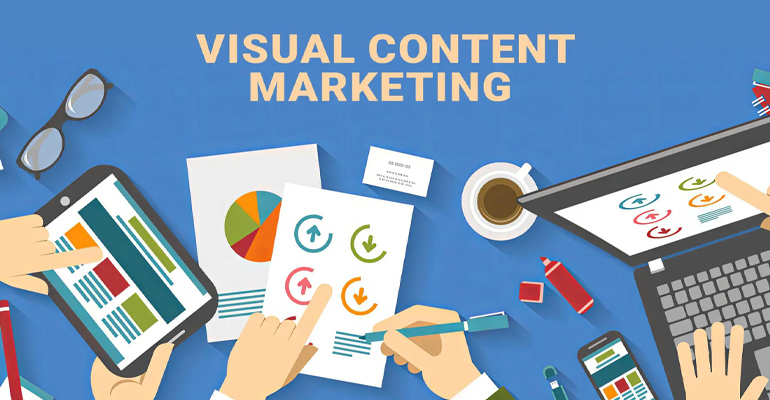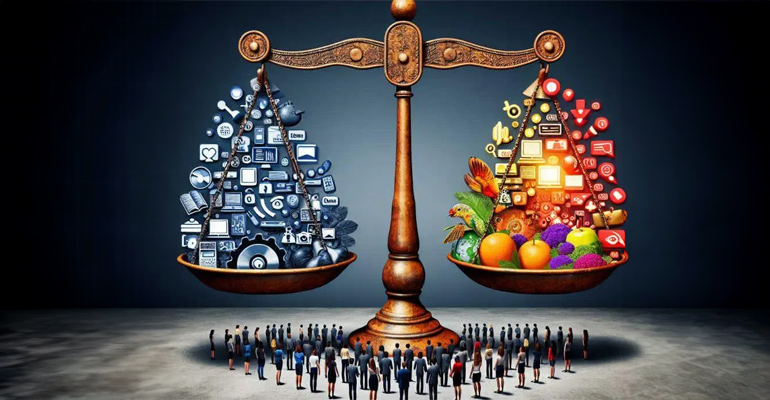Understanding the Power of Visuals
Visual content has the unique ability to evoke emotions, tell stories, and convey complex information in a matter of seconds. For nonprofits, this translates into:
- Increased engagement: Visually appealing content grabs attention and encourages longer viewing times.
- Improved storytelling: Images and videos can bring your mission to life, creating a deeper emotional connection with your audience.
- Enhanced sharing: Eye-catching visuals are more likely to be shared on social media, expanding your reach.
- Boosted conversions: Visual content can inspire donations, volunteer sign-ups, and other desired actions.

Types of Visual Content for Nonprofits
- Photography: High-quality images can showcase your work, highlight beneficiaries, and capture the essence of your mission.
- Impactful portraits: Feature the faces of the people you serve, telling their stories through their eyes.
- Event photography: Capture the energy and excitement of your fundraising events or community gatherings.
- Behind-the-scenes glimpses: Offer a peek into your organization’s daily operations to build trust and transparency.
- Infographics: Complex data and information can be made easily digestible through visually appealing infographics.
- Impact statistics: Showcase the scale of the issue your nonprofit addresses.
- Program outcomes: Highlight the results of your work with clear and engaging visuals.
- Donor impact: Demonstrate how donations are used to create positive change.
- Video: Videos have the power to immerse viewers in your story and create a lasting impact.
- Impact stories: Share personal narratives of those affected by the issue you address.
- Explainer videos: Clearly communicate your mission and programs.
- Behind-the-scenes footage: Offer a glimpse into your organization’s work.
- Testimonial videos: Let supporters share their experiences and impact.
- Social Media Graphics: Eye-catching visuals are essential for social media success.
- Quotes: Share inspiring messages with visually appealing graphics.
- Call-to-action graphics: Encourage engagement and conversions with clear and compelling visuals.
- Event promotions: Create visually striking graphics to promote upcoming events.

Creating Effective Visual Content
Creating effective visual content for nonprofits involves understanding the nuances of your audience and tailoring your visuals accordingly. Here are some key considerations:
- Know your audience: Understand their preferences and tailor your visuals accordingly.
- Tell a story: Use visuals to create a narrative that resonates with your audience.
- Keep it simple: Avoid clutter and focus on clear messaging.
- Use high-quality visuals: Invest in professional photography and videography if possible.
- Optimize for different platforms: Adapt your visuals to fit various social media channels.
Incorporating Visual Content into Your Marketing Strategy
Integrating visual content into your marketing strategy can significantly enhance your nonprofit’s outreach and engagement. Here are some ways to incorporate visual content effectively:
- Website optimization: Use high-quality images and videos throughout your website to improve user experience and engagement.
- Social media campaigns: Create visually appealing content to increase followers and engagement.
- Email marketing: Incorporate images and short videos to enhance email open rates and click-through rates.
- Fundraising campaigns: Use visuals to tell compelling stories and inspire donations.
- Partnerships and collaborations: Create joint visual content with other organizations to expand your reach.
Measuring the Impact of Visual Content
To ensure your visual content marketing efforts are effective, it’s essential to measure their impact regularly. Here are some metrics and methods to consider:
- Track engagement: Monitor likes, shares, comments, and views on your visual content.
- Analyze website traffic: Measure the impact of visual content on website visits and conversions.
- Monitor donations: Track the correlation between visual content and fundraising success.
- Gather feedback: Conduct surveys or polls to understand audience preferences.

The Role of Visual Content Marketing in Nonprofits
Visual content marketing is not just a trend; it’s a necessity for nonprofits aiming to make a significant impact. In a world where attention spans are shrinking, the ability to communicate quickly and effectively is crucial. Visual content marketing allows nonprofits to stand out, tell their story, and connect with audiences on a deeper level.
The Psychological Impact of Visuals
Humans are naturally drawn to visuals. Our brains process images 60,000 times faster than text, making visual content an incredibly powerful tool for communication. This is especially important for nonprofits, where the ability to quickly convey the importance of a cause can mean the difference between gaining a supporter or losing them.
- Emotional connection: Visuals can evoke emotions that words alone cannot. A powerful image or video can move people to tears, inspire them to take action, or make them feel a deep sense of connection to your cause.
- Memory retention: People remember 80% of what they see and do, compared to just 20% of what they read. By using visuals, nonprofits can ensure their message sticks with their audience.
Real-Life Examples of Visual Content Success
Several nonprofits have successfully leveraged visual content marketing to amplify their impact. For example:
- Charity: water: This nonprofit uses stunning photography and compelling videos to showcase the impact of clean water projects around the world. Their visual content is central to their storytelling strategy, helping to convey the urgency and importance of their work.
- World Wildlife Fund (WWF): WWF’s use of powerful images of endangered species and habitats has helped them build a strong emotional connection with their audience, driving awareness and action on critical environmental issues.

Practical Tips for Visual Content Marketing
Here are some practical tips for nonprofits looking to enhance their visual content marketing strategy:
- Create a visual content calendar: Plan and schedule your visual content in advance to ensure a consistent flow of engaging materials.
- Leverage user-generated content: Encourage your supporters to share their own photos and videos related to your cause. This not only provides you with additional content but also builds a sense of community.
- Invest in training: If hiring professional photographers or videographers is out of reach, consider investing in training for your staff. Many online courses can teach the basics of photography, videography, and graphic design.
- Use tools and resources: There are numerous tools available, such as Canva for graphic design, Animoto for video creation, and Infogram for infographics, that can help you create high-quality visual content without a large budget.
Visual Content Marketing as a Catalyst for Change
Visual content marketing is an essential strategy for nonprofits seeking to maximize their impact. By understanding the power of visuals and effectively incorporating them into their marketing efforts, nonprofits can better connect with their audiences, inspire action, and drive meaningful change. Whether through photography, video, infographics, or social media graphics, the potential of visual content marketing to elevate a nonprofit’s mission is immense.
By embracing this approach and continuously measuring its impact, nonprofits can ensure they are making the most of their resources and achieving their goals. Visual content marketing is not just about creating pretty pictures; it’s about telling stories that matter, creating connections, and ultimately, changing the world.



